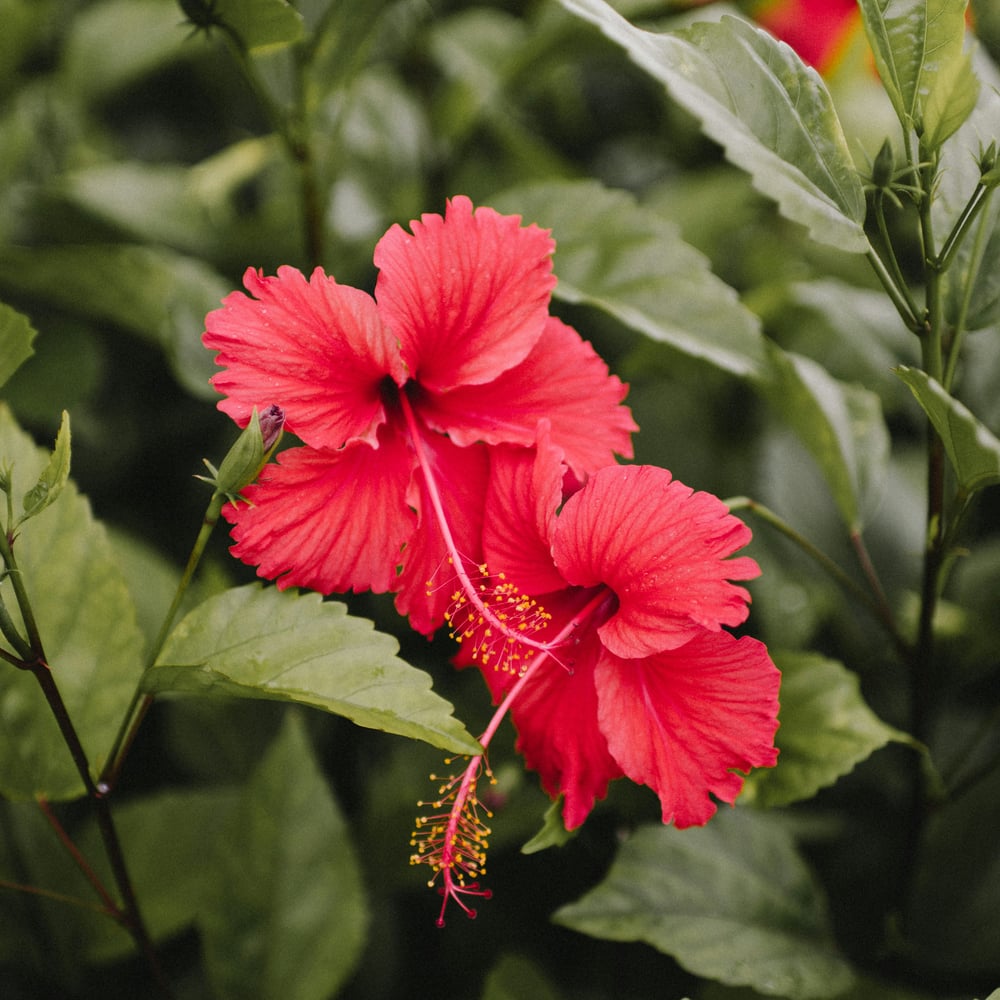Hawaii's State Flower: Hibiscus
 Hawaii's State Flower: Hibiscus
Hawaii's State Flower: Hibiscus
Meet Hibiscus
Officially the state flower of Hawaii since 1988, the hibiscus reflects island vitality. Because of its amazing flowers and profound cultural significance, Hawaiians especially love hibiscus. Its vibrant colors and large, showy blossoms reflect Hawaii's unique natural beauty and culture.
History and Significance
The journey of the hibiscus to becoming Hawaii's state flower is as colorful as the bloom itself. Officially chosen in 1988, the hibiscus took the place of the yellow hibiscus as the state flower, so stressing the significance of this plant for Hawaii's identity.
Celebrated for its beauty and tenacity, the hibiscus speaks to the Aloha spirit and represents among the people of Hawaii love, friendliness, and harmony.
Hawaii's use of the hibiscus displays its cultural values. The flower can be found in many forms across the islands, typically seen embellishing leis and used in traditional ceremonies. Its resilience to varied surroundings represents the islands’ welcoming nature, appreciating diversity in both flora and culture.
Biological Information
Officially called Hibiscus rosa-sinensis, the hibiscus is a member of the Malvaceae family. Large, trumpet-shaped flowers in a spectrum of colors—red, yellow, pink, and white—are what make this tropical shrub so well-known. Usually lasting only one day, each bloom blossoms nonstop to create a vibrant show.
Hibiscus plants thrive in well-drained, sandy soils and prefer full sunlight to grow optimally. In Hawaii, these flowers flourish in warm temperatures and can be found in gardens, parks, and even along the roadsides. Regular watering is crucial, especially during dry spells, to keep the plants healthy and vibrant.
 Blooming Period
Blooming Period
The hibiscus presents a wonderful spectacle all year long from its unusual growing season. These flowers bloom anywhere throughout Hawaii; the warmer months provide peak blossoming. Depending on the kind, individual blooms could endure one day or several days, adding to the rich scene Hawaii is known for.
The flowering cycle can be influenced by weather, sunlight, and correct maintenance as well as by Under ideal circumstances, the hibiscus may provide bursts of color that accentuate the natural beauty of the island's any garden or landscape.
Meaning, Symbolism, and Representation
The hibiscus has quite strong symbolic connotations. It stands for Aloha's spirit, kindness, and beauty as well as Often used in leis and a mainstay of celebrations and festivities, the flower is significant in Hawaiian tradition. Its vivid presence at gatherings highlights its significance in communicating love and thanks.
Hibiscus flowers have a long-standing association with Hawaiian traditions. Beyond their aesthetic appeal, they are a cultural emblem, embodying the warmth and strength of the islands. Their resilience and beauty serve as a reminder of Hawaii's unique heritage and the close connection its people have with nature.
Blooming Beauty of Hibiscus
The hibiscus flower is more than just a pretty sight; it represents what Hawaii is all about. This state flower not only makes the islands look more beautiful, but it also stands for Hawaii's long past and lively spirit. When we see hibiscus in bloom, it makes us think of the Aloha attitude and the special charm that makes Hawaii a paradise.
Get Your Flowers for Delivery in Hawaii











